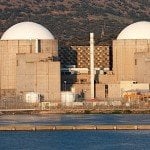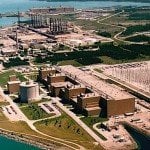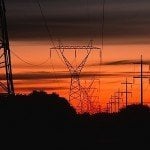After a solar storm, Starlkink lost 40 satellites. The loss came to a naturally occurring phenomenon. Electromagnetic storms happen when our sun emits massive outbursts of energy. These solar storms are not an unusual occurrence by any stretch, but what is out of the ordinary is for one to down so many satellites in one solar incident.
Solar storms are responsible for Aurora Borealis, or Northern Lights. While they are not immediately dangerous to our health, they do have the potential to disrupt our power grids and communications. These electromagnetic storms that are caused by solar flare-ups are also hazardous to satellites.
What Happened to the Starlink Satellites
The satellites had been launched on February the 3rd. The data indicated that they had achieved controlled flight at approximately 130 miles from the ground, however, the next day the geomagnetic storm hit.
According to the GPS onboard the satellites, the onset of the storm caused atmospheric drag to increase substantially. Starlink did take action at the time, maneuvering the satellites into a “safe mode”. The idea behind this move is that the satellites minimize drag, flying on their edge in hopes of returning to orbit.
They never made it back.
40 satellites re-entered the earth’s atmosphere as a result of this event.
Cost of Starlink Satellite Incident Unknown
In a statement released Starlink said, “the satellites deployed on Thursday (February 3) were significantly impacted by a geomagnetic storm on February 4”.
While Starlink doesn’t release the costs of its satellites, it has been speculated that they cost between $250, 000 – $500, 000. If those numbers are accurate, that would put the cost of the satellites lost at $10 – 20 million, not accounting for lost revenue, stock, rebuilding, etc.
In the world of astronomy, this is a major event. While these storms are a normal occurrence, having a single storm take out this many satellites is unheard of.
What Do Starlink Satellites Do?
These low orbiting satellites are intended to provide broadband internet services to places where it is impossible to do so via a cable. The service is fairly expensive. For places like the island nation of Tonga, which had its seafloor data cable destroyed by an earthquake recently, Starlink proves useful. The satellites themselves, however, are not without controversy.
They are very bright and orbit lower than most satellites. This makes them very visible and they have even been criticized for disrupting space observation efforts.
No-Risk to People on Earth
The good news seems to be that the satellites aren’t expected to reach earth. According to the UK Space Agency’s Head of Space Surveillance Jacob Greer, they will simply burn up in the atmosphere. A $20 million meteor shower, courtesy of Elon Musk and his shareholders – though the company cannot be faulted for the incident.
Achieving orbit and space travel, while becoming more routine, is not an easy task to accomplish. This occurrence highlights the challenges of operating in space.
NOTES
[2] Britannica Encyclopedia “Space X”
[3] Fortune Magazine


































